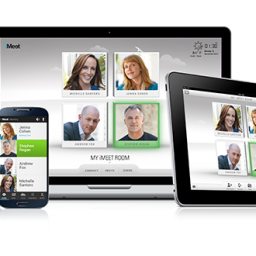Original Post by Helen Lancaster
A blog giving you the low-down on high-performing webcasts.
Webcasts, webinars, virtual events – companies are waking up to the potential they offer for b
oth spreading awareness and generating leads.
One of the key areas for potential in webinars is the fact that they are interactive, 85% offer a Q&A session, 38% use social sharing, 22% offer polls, and 4% let participants chat. All of this makes your audience feel more involved. Which is why over 62% of B2B marketers use webinars and webcasts for content marketing and 77% of businesses use them specifically for lead generation.
But, despite all the audience and data capture benefits webinars offer, in-order to get there you have to first make sure that your webinar is well planned.
And in order to ensure that your webinar is well-planned and therefore collaborative and successful, you need to ask yourself the following questions:
Planning Your Webinar
1. Does your webinar answer a need?
First off, make sure your webcast really does answer a need. Doing a webcast for the sake of doing a webcast is not a need; answering common customer questions is.
Remember, a webcast is the medium, not the message.
223 people attend the average webinar.
So put yourself into the mind of your customer, and ask “what value does this webcast bring to them?” If you can’t answer – or if you can’t imagine who your customeris – it’s better to rethink your project.
2. Make sure you’re signalling tone and manner to the audience in your title
Your title signals tone and manner to your audience as well as content. So give your webcast the best possible warm-up – by thinking carefully about your headline. This headline has to reflect the need or pain of your customers that you are trying to answer. Make sure you consider SEO when creating this headline and support it by creating an informative and well-designed landing page.
The average attendance time for a webinar in 2016 was 57 minutes
3. Consider the timing
Webinars can be evergreen content, 59% of attendees watch the event live and 33% watch it on-demand. However, many are time sensitive. So, if your webinar is one of the latter give a thought as to when you will be hosting your performance and as to where your audience comes from.
You also need to ask yourself, when is the best time for sending the invitation and running the webinar?
Statistically speaking, the best day for running a webinar is a Wednesday or Thursday.
4. Set your material to a structure
12% of webinar participants download content as a result.
Your webinar should be structured around three main parts, like a story.
The introduction
The introduction or set-up gives your audience a situation, the problem to be solved, the characters involved and why they matter. Make sure you’ve covered them all. Your audience won’t be impressed by a speaker unless you’ve pointed out their right to be there – their professional status or qualifications.
The highlight
The key point or highlight is the single most important point you want your audience to remember. This needs to be clear in your mind from the start. You can have multiple takeouts but first, concentrate on the big one.
Proof points
While the proof points – the continuing thoughts that turn a webinar into a vivid narrative – are your case studies, customer recommendations, and five-star reviews. Always present in the right order.
5. Plan for participation
85% of webinars offer a Q&A session.
You don’t want people passively consuming content; it’s not involving. So design your presentation to include polls, questions, links to click, sidebar facts and Q&A opportunities. And if you’re offering your webcast as a download or stream your audience can view again at their leisure, make sure they can step-through or click away to areas that interest them most.
In short, treat your webinar as a two-way dialogue between you and the audience. Build in a transition point every 10-15 minutes between speakers, slides, demos or polls.
A third of your audience will sign up within 7 days from the event, and over a quarter on the same day.
So as a parting thought, remember at least half your energy should go into getting people to the sign-up page. Start with your best customers, ask them to recruit their friends and colleagues, give them an incentive to do so. Word-of-mouth is always the best buzz.
Takeaways:
- When planning a webinar, be sure you know first why you’re doing it
- A good webinar title both intrigues and explains
- Time-sensitive webinars need attention to time zones and time-of-day
- Your webinar structure can take lessons from comedians
- Design webinars from the outset to allow audience participation
Are you planning a a webcast? Click here for more information and free trials!

